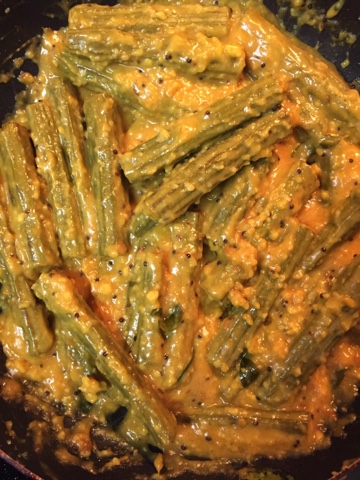Dry Gobi Manchurian (Cauliflower Manchurian) is a very popular North Indian dish. The Indo Chinese version of manchurian generally tends to have a gravy base. This is served as a starter in Indian restaurants. I love the dry version of it and attempted to make it at home on several occasions, but I was never able to deliver it with restaurant style quality. Alas, my hubby made this dish and it turned out simply amazing. Here is his recipe for a restauarnt style Gobi Manchurian.
Recipe:
Ingredients:
Cauliflower - 1
For the batter:
Corn Flour - 1/2 bowl
Corn starch - 1 tsp
Rice Flour - 3 tsp
Soy sauce - 2 tsp
Salt
Green Chillies - 2
For frying:
Oil - 2 cups
For the sauce:
Oil - 5 tsp
Ginger - 1 tsp (Chopped)
Garlic - 1/2 bulb (Chopped)
Onions - 1/2
Spring Onions - 2
Salt
Soy sauce - 3 tsp
Chilly Sauce - 3 tsp
Tomato ketchup - 3 tsp
1. Blanch the cauliflower for 10 mins. This process takes away the rawness and at the same time, does not make the cauliflower very soft. In addition, it also removes any worms that may be hiding in there.
2. Next step is to make the batter - Mix soy sauce, water, salt and green chillies to corn flour, rice flour and corn starch mixture and make it into a thick paste.
3. Heat oil in a pan for deep frying. Dip the blanched cauliflower in the above paste and deep fry it until it becomes very crispy. To make a great manchurian, the fried cauliflower should be very crispy. Make sure you fry them for long to get this cruch on a low to medium flame.
4. In the meantime, start preparing the sauce. In a pan, heat oil, add ginger, garlic, onions, spring onions and salt.
5. After the onions are cooked, add soy sauce, chilly sauce, tomato ketchup and mix it.
6. Add the fried cauliflower and toss it in the sauce.
Serve it hot as starters. It also tastes great with Chapathi - you can make a roll by stuffing the manchurian inside. It taste great!!














































